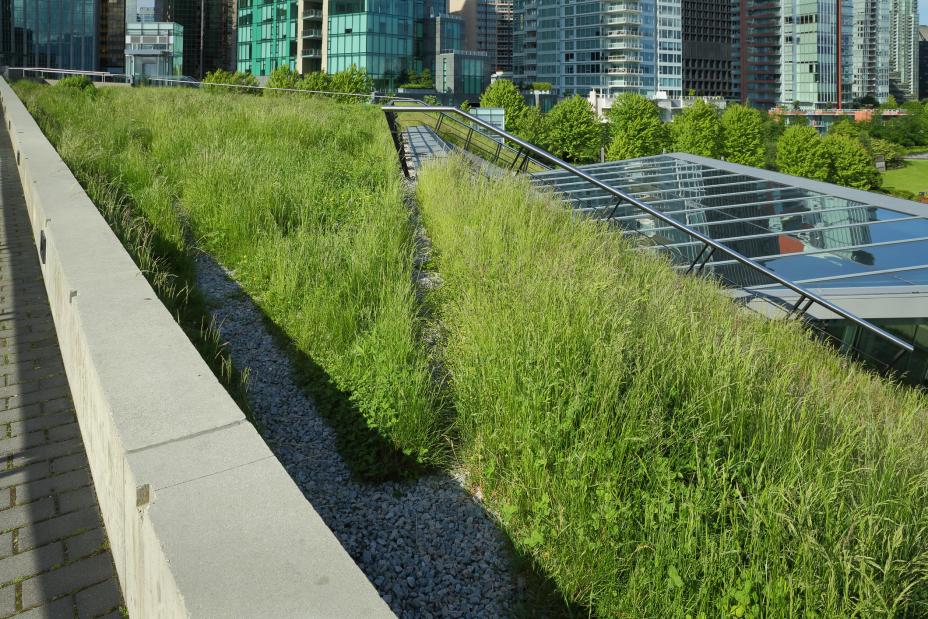Modeling Air Quality Impacts of Green Infrastructure with CMAQ

Green Infrastructure includes urban forestry, reductions in impervious surfaces, and green roofs. It is a cost-effective approach to improve the water quality of storm water runoff, mitigate flooding, reduce urban heat island effects, lower building energy demands, and protect coastal areas. The benefits of green infrastructure are derived largely from changing the surface energy balance in urban areas, increasing the infiltration of storm water and reducing energy consumption.
There may be air quality benefits and tradeoffs in the implementation of green infrastructure. The increase in vegetation coverage will increase the atmospheric deposition of many gaseous and aerosol pollutants. However, these changes also result in lower heating of the urban surfaces, which leads to a lower planetary boundary layer (PBL![]() PBLThe troposphere can be divided into two parts: a planetary boundary layer, PBL, extending upward from the surface to a height that ranges anywhere from 100 to 3000 m, and above it, the free atmosphere. The boundary layer is directly influenced by the presence of the Earth's surface, responding to such factors as frictional surface drag, solar heating, and evapotranspiration. Each of these factors generates turbulence of various-sized eddies.).
PBLThe troposphere can be divided into two parts: a planetary boundary layer, PBL, extending upward from the surface to a height that ranges anywhere from 100 to 3000 m, and above it, the free atmosphere. The boundary layer is directly influenced by the presence of the Earth's surface, responding to such factors as frictional surface drag, solar heating, and evapotranspiration. Each of these factors generates turbulence of various-sized eddies.).
The PBL is the lowest part of the atmosphere that is directly influenced by contact with the earth’s surface. This is the part of the atmosphere that is in direct contact with people and ecosystems. The height of the PBL represents the area of the atmosphere near the surface that is well-mixed and determines the volume of air into which pollutants are emitted. A lower PBL can concentrate primarily emitted pollutants, e.g. NOx. The WRF-CMAQ coupled air quality and meteorological model is being applied to explore the air quality impacts of green infrastructure implementation. Tools are also being developed to estimate the impact that the energy savings due to green infrastructure will likely have on the emission of pollutants. This modeling system can simultaneously assess the meteorological and air quality impacts of green infrastructure.
